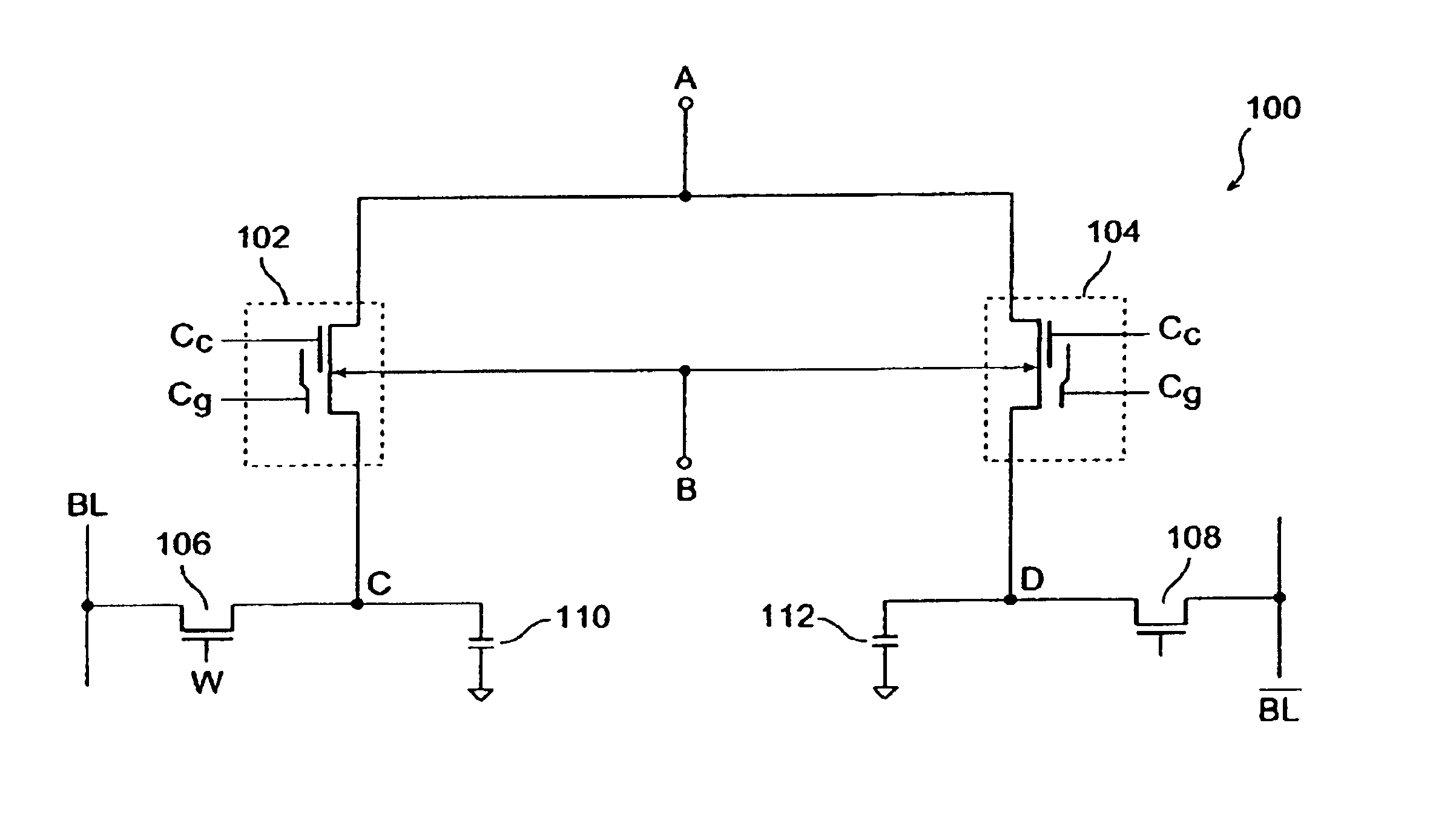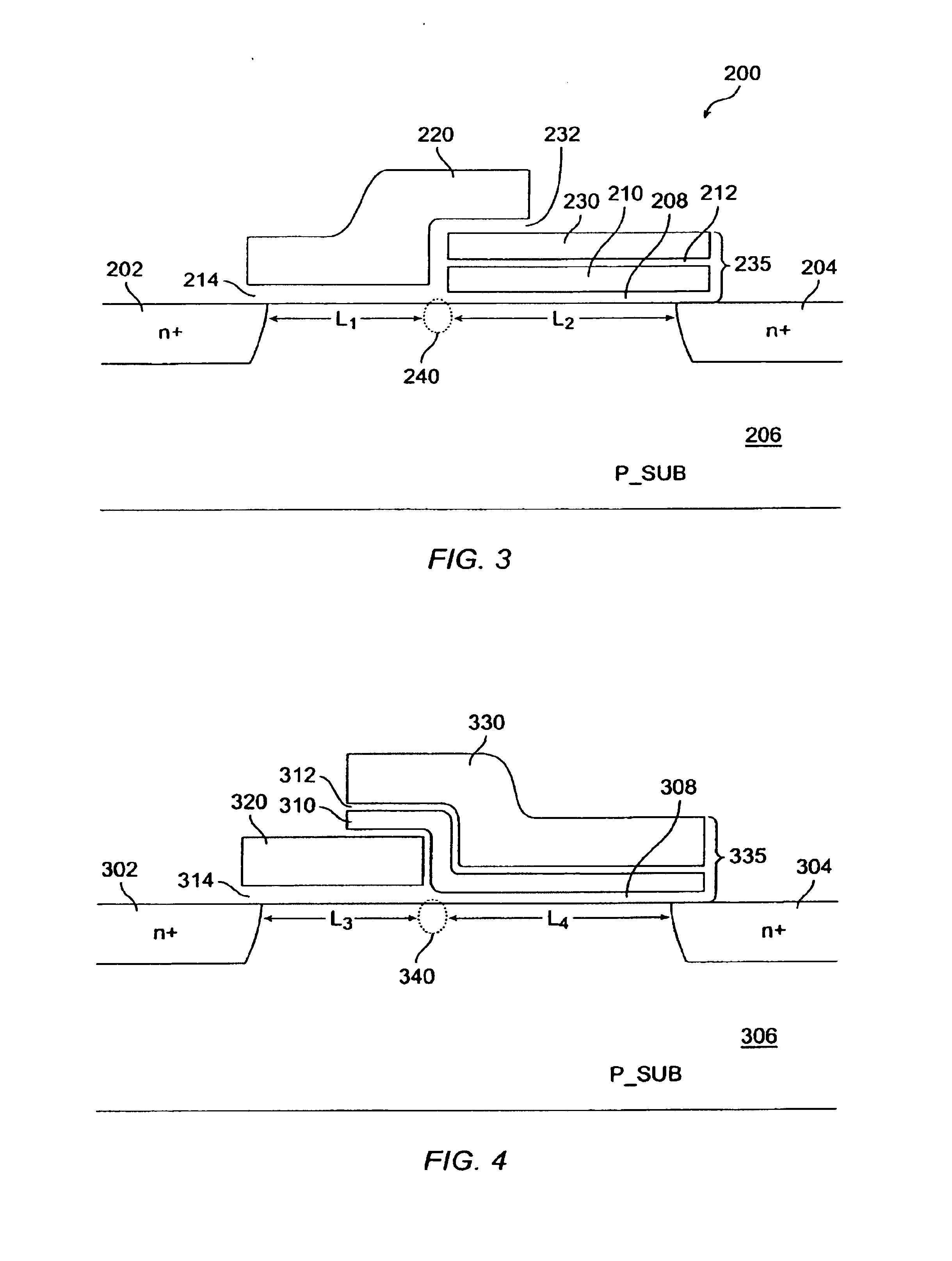Non-volatile differential dynamic random access memory
- Summary
- Abstract
- Description
- Claims
- Application Information
AI Technical Summary
Benefits of technology
Problems solved by technology
Method used
Image
Examples
Embodiment Construction
[0030]According to the present invention, an improved memory device and method is provided. More particularly, the invention provides a semiconductor memory that has integrated non-volatile and Dynamic random access memory cells. Although the invention has been applied to a single integrated circuit device in a memory application, there can be other alternatives, variations, and modifications. For example, the invention can be applied to embedded memory applications, including those with logic or microcircuits, and the like.
[0031]FIG. 2 is a transistor schematic diagram of a differential non-volatile dynamic random access memory (DRAM) 100 that includes both non-volatile and dynamic random access memory, in accordance with one embodiment of the present invention. This diagram is merely an example, which should not unduly limit the scope of the claims herein. One of ordinary skill in the art would recognize many other variations, modifications, and alternatives. Differential non-vola...
PUM
 Login to View More
Login to View More Abstract
Description
Claims
Application Information
 Login to View More
Login to View More - R&D
- Intellectual Property
- Life Sciences
- Materials
- Tech Scout
- Unparalleled Data Quality
- Higher Quality Content
- 60% Fewer Hallucinations
Browse by: Latest US Patents, China's latest patents, Technical Efficacy Thesaurus, Application Domain, Technology Topic, Popular Technical Reports.
© 2025 PatSnap. All rights reserved.Legal|Privacy policy|Modern Slavery Act Transparency Statement|Sitemap|About US| Contact US: help@patsnap.com



